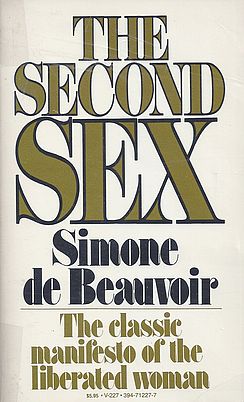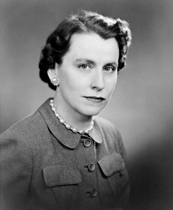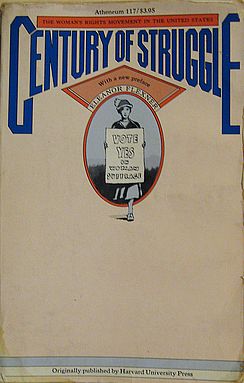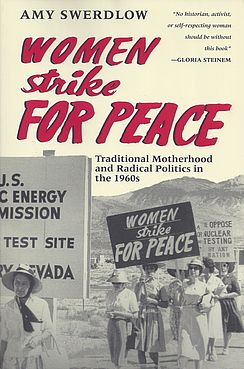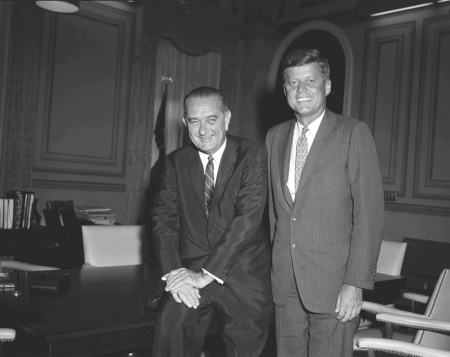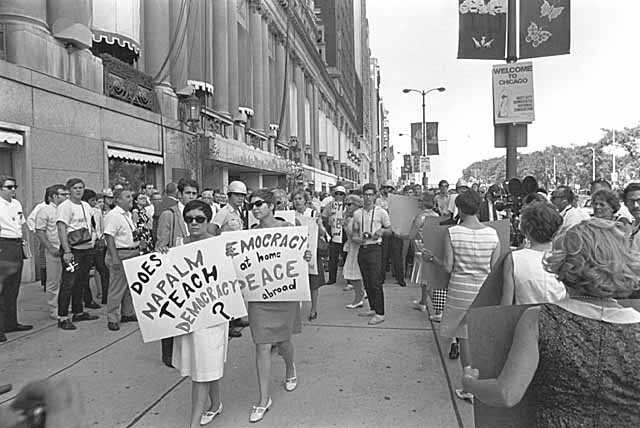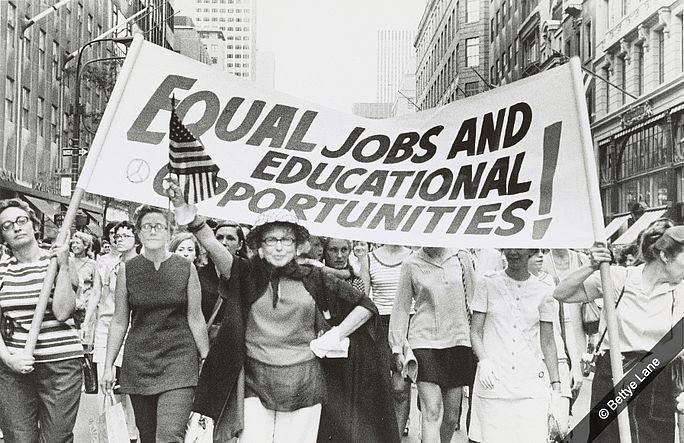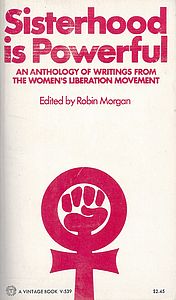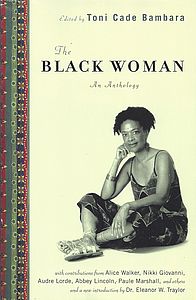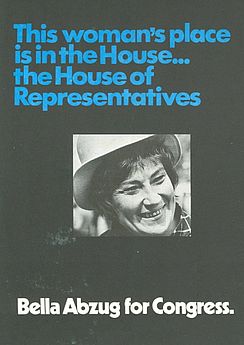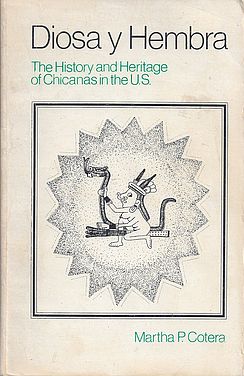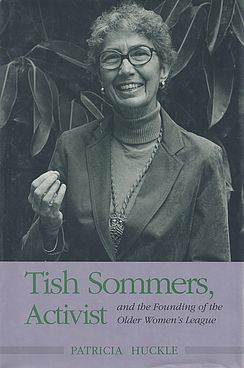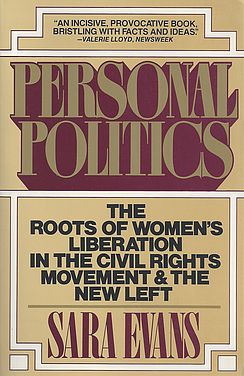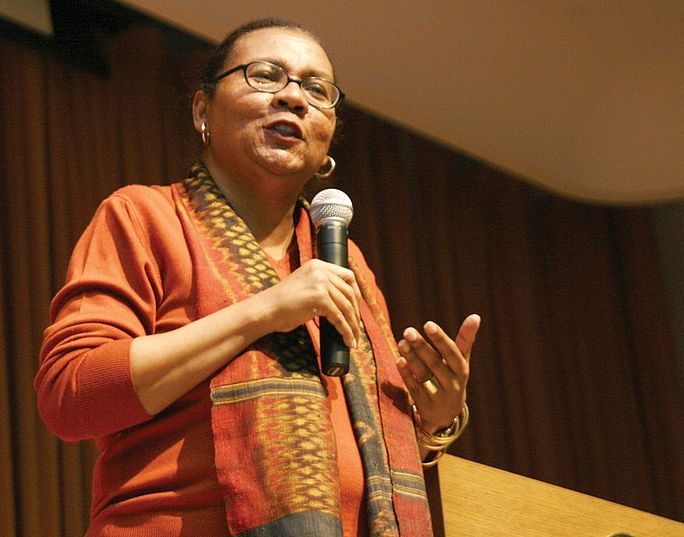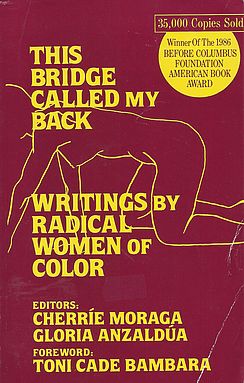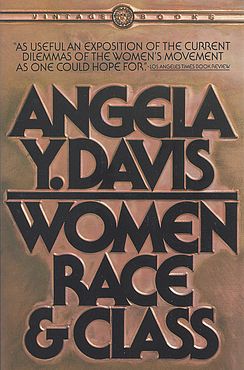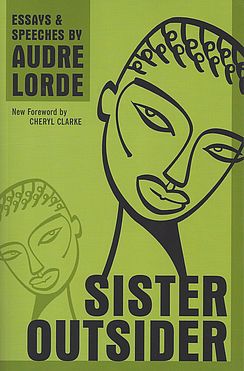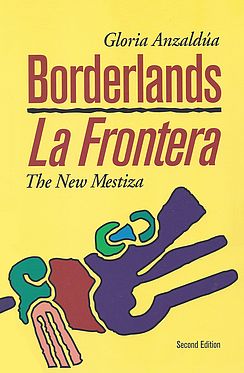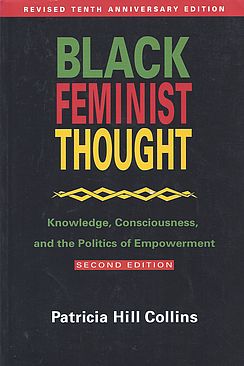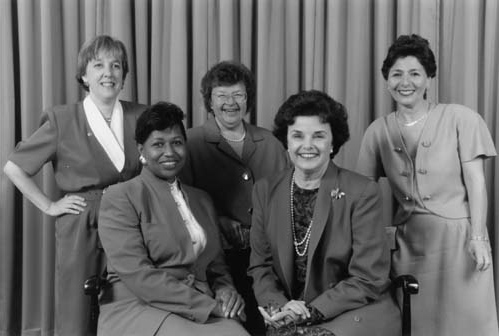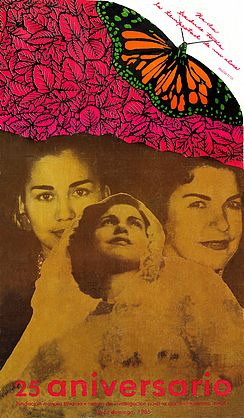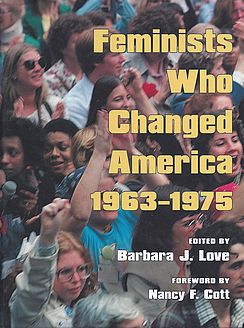Resource Library
Politics & Social Movements Timeline
1941 Jeannette Rankin & WWII
Jeannette Rankin, the first woman elected to the U.S. Congress in 1916, (Rep., Montana) voted against the U.S. entry into WWI and WWII. She was the lone “no” vote in 1941. In 1968, anti-war women established the Jeannette Rankin Brigade. Biography, U.S. Congress. “Jeannette Rankin,” Suffragists Oral History Project, University of California, Berkeley. Jeannette Rankin Archive, Schlesinger Library.
1944 Emma Lazarus Federation
The Emma Lazarus Federation of Jewish Women’s Groups was founded out of the Jewish women’s division of the International Workers Order, A progressive organization that promoted Jewish culture, the “Emmas” supported relief efforts and civil rights, advocated for women’s rights, and community leadership, and commissioned literary and art works to celebrate Jewish progressive women. The ELF disbanded in 1989. Article by Joyce Antler, Jewish Women’s Archive. Emma Lazarus Federation of Jewish Women’s Clubs records.
1946 UN Comm. on Human Rights
Eleanor Roosevelt was the chair of the United Nations Commission on Human Rights, which drafted the Universal Declaration of Human Rights, and she served as the first U.S. Representative to the UN Commission on Human Rights. The Universal Declaration of Human Rights (adopted 1948) uses gender neutral language. Eleanor Roosevelt Papers, FDR Library. Eleanor Roosevelt Papers Project, George Washington University. The Universal Declaration of Human Rights. Eleanor Roosevelt's Statement to the United Nations General Assembly.
1947 Community Service Organization
The Community Service Organization was organized by Mexican American women in Los Angeles. They worked on voter education and legislative campaigns, instituted lawsuits against unfair labor practices and school segregation, and engaged in other grassroots efforts to empower Mexican-American women and men. Many of its activists also worked with the United Farm Workers. “Organize! Lessons of the CSO” video. The Union of Their Dreams, Jessica Govea statement. The Union of Their Dreams, primary sources.
1949 The Second Sex
Simone de Beauvoir’s The Second Sex (published in France in 1949 and in an English edition in 1953) asserted, “One is not born, but rather becomes, woman.” The debate that de Beauvoir, a French feminist, initiated about the roles of biology and environment in the construction of gender continues today. Introduction, The Feminist eZine. Review in New York Times.
1950 Declaration of Conscience
In a Senate speech, Maine Republican Margaret Chase Smith denounced the “fear, ignorance, bigotry, and smear” that were turning the U.S. Senate into “a forum of hate and character assassination.” Although she did not mention Senator Joseph McCarthy by name, her colleagues understood that her “Declaration of Conscience” was aimed at his unfounded accusations about subversives in government. Text, “Declaration of Conscience.”United States Senate, Classic Senate Speeches.
1950 Highlander Folk School
The Highlander Folk School (today the Highlander Research and Education Center) provided leadership training to many civil rights activists. Among those who attended the racial- and gender- integrated sessions were Rosa Parks and Septima Clark. Highlander Research and Education Center. Rosa Parks at Highlander, 1955. Septima Clark biography, Southern Cultures.Septima Clark biography, North Carolina Humanities Council.
1950 McCarthyism
Senator Joseph McCarthy, in his attempt to uncover communists and communist sympathizers in the United States, attacked members of the American Association of University Women. Judge Dorothy Kenyon was able to clear her name but Esther Bruauer, who worked for the State Department, lost her job. AAUW, “On McCarthy’s Blacklist”. "The Pink Ladies of the AAUW," National Republic.
1950 Pauli Murray
Pauli Murray published the groundbreaking study States’ Laws on Race and Color in 1950. Murray was a pioneering civil rights lawyer and feminist activist, serving on the 1961 President’s Commission on the Status of Women and co-founding NOW in 1966. She compared sexism, or what she called “Jane Crow,” to racism and Jim Crow. In 1977 she became the first African-American Episcopal priest. Pauli Murray Project. States’ Laws on Race and Color.
1954 Ladies of Courage
Ladies of Courage, written by Eleanor Roosevelt and Lorena Hickok, encouraged women to become politically active and profiled women political figures. Eleanor Roosevelt, American Visionary.
1955 Martha Griffiths
Martha Griffiths (Democrat), who represented Michigan in the House of Representatives from 1955 to 1974, is credited with playing a key role in the passage of Title VII of the Civil Rights Act of 1964 and became known as the “mother of the Equal Rights Amendment” for work that resulted in the amendment’s congressional passage and submission to the states for ratification. Biography. Photo: Library of Congress, public domain.
1957 Daisy Bates
Daisy Bates is best known for her role advising the Little Rock Nine during the desegregation effort at the Little Rock (Arkansas) Central High School. Bates and her husband published the Arkansas State Press from 1941 to 1959, giving readers information about civil rights activism in the state and beyond. Daisy Bates interview.
1957 SCLC
The Southern Christian Leadership Conference, founded after the Montgomery Bus Boycott, was involved in successful major non-violent civil rights protests, including the Birmingham Campaign, the March on Washington, and the Selma March. Ella Baker, Septima Clark, Diane Nash and other black women activists were prominent members of the organization although men, beginning with Martin Luther King, Jr., have always been president. Ella Baker Center for Human Rights. Ella Baker interview. Ella Baker Archives, New York Public Library. Oral History Interview with Septima Clark.
1959 Century of Struggle
Century of Struggle by Eleanor Flexner documented the history of the women’s rights movement and argued that women’s struggle for the right to vote was central to the development of American democracy. Eleanor Flexner archive, Schlesinger Library.
1960 Democrats reject ERA
The National Democratic Convention refused to endorse the Equal Rights Amendment after Esther Peterson testified in opposition to the amendment before the party’s Platform Committee. Peterson’s action was an indication that many activists still felt that it was better to pass protective labor legislation or what Peterson called “specific bills for specific ills.” The next year, President Kennedy appointed Peterson as head of the U.S. Women’s Bureau and she was instrumental in the establishment of the President’s Commission on the Status of Women and the passage of the Equal Pay Act of 1963. Esther Peterson, US Dept. of Labor. JFK with members of Commission.
1960 Greensboro Sit-ins
The Greensboro Sit-ins were organized by students from the North Carolina Agricultural and Technical State University. They were soon joined by women from Bennett College. The sit-in movement spread across the south, helped mobilize student activists, and drew national attention to segregation practices. Today the former Woolworth Store is the International Civil Rights Center and Museum. International Civil Rights Center and Museum. Greensboro Sit-ins. “Civil Rights Greensboro,” UNCG Digital Collection.
1960 SNCC
Ella Baker encouraged students participating in sit-ins in Southern cities to form the Student Nonviolent Coordinating Committee (SNCC). One of its first major actions was the 1961 Freedom Rides challenging segregation. Diane Nash was one of the many black women leaders in SNCC. In 1968, Frances Beal presented a position paper that resulted in the formation of a SNCC black women’s caucus. SNCC Documents. Diane Nash biography, "Freedom Riders".
1961 Freedom Rides
The Freedom Rides began in 1961 when members of the Congress of Racial Equality rode interstate buses across the south to protest the lack of federal enforcement of rulings that declared that segregated buses were unconstitutional. Diane Nash played a critical role in organizing SNCC students’ participation in the Freedom Rides. Ruby Doris Smith-Robinson was one of the many riders who were attacked and jailed. Civil Rights Movement Veterans. Mary Ann Smith Wilson interview. Ruby Doris Smith-Robinson biography, Civil Rights Digital Library. Ruby Doris Smith biography, SNCC Legacy Project. “Civil Disobedience and the Freedom Rides” by Judith Rosenbaum. Diane Nash interview.
1961 Women Strike for Peace
In November 1961, Women Strike for Peace organized a nationwide strike against atmospheric nuclear testing. Because of the Cold War climate of the day, prominent WSP women were called before the House Un-American Activities Committee because of fears they were communist dupes. After the passage of the 1963 Nuclear Test Ban Treaty, WSP women protested the Vietnam War. Photos by Dorothy Marder.
1962 Port Huron Statement
The Port Huron Statement called for participatory democracy, which meant that all people should be able to have a say over the decision-making process that affects their lives. It was the political manifesto of Students for a Democratic Society which was founded in 1960. Full text of Port Huron Statement. Casey Hayden essay.
1963 JFK & LBJ
1963 Gerda Lerner
Gerda Lerner taught the first women’s history course (probably in the world) at the New School for Social Research in 1963. In 1972 she created the first Master’s program in Women’s History, at Sarah Lawrence College, and in 1980 the first PhD women’s history program at the University of Wisconsin, Madison. Obituary, New York Times. Biography, Jewish Women's Archive. Biography and interview, Smith College.
1964 Fannie Lou Hamer at DNC
Fannie Lou Hamer, born in Mississippi in 1917, was the daughter of a sharecropper. In 1962, she became involved in a local voter registration drive and was soon working as an activist in various communities. In 1964, Hamer became the vice-chair of the Mississippi Freedom Democratic Party, which contested the legality of the state’s all-white delegation to the National Democratic Convention. Hamer’s activism brought national attention to the civil rights movement. Biography, Mississippi History Now. Fannie Lou Hamer Memorial. Biography, National Women's History Museum.
1964 Free Speech Movement
The Free Speech Movement started on the University of California at Berkeley in the 1964 fall semester when the administration banned political activities on campus. Students who were active in the civil rights movement, through their participation in the Sheraton Palace demonstration and in the Mississippi Freedom Summer, demanded their right to free speech. While the students were victorious and the Free Speech Movement encouraged more student activism, it also contributed to a conservative backlash. Free Speech Movement Digital Archive, Berkeley. Free Speech Movement Archives. Film, "Berkeley in the Sixties".
1964 Freedom Summer
Freedom Summer (aka Mississippi Summer Project) was a voter registration drive organized by key civil rights organizations and led by SNCC activists. It brought over a thousand students to Mississippi. The violence directed at white students (including murders) brought national media attention in ways that the beatings and deaths of black volunteers did not. Septima Clark organized Freedom Schools as part of the Project to teach African American history and other subjects to young students. Mississippi Freedom Summer, Armistad Digital Resource. Septima Clark archive, Avery Research Center. Essay about Septima Clark, by J. Douglas Allen-Taylor. Film, "Freedom Summer".
1964 Margaret Chase Smith
Senator Margaret Chase Smith was the first woman nominated for the presidency by a major political party. She lost every primary but stayed in the running to the end. She began her legislative career in the U.S. House of Representatives (1940-1949) and served in the U.S. Senate from 1949-1972. Margaret Chase Smith Library.
1965 Liberator
Liberator magazine began running a series of articles addressing black women’s roles in the black liberation movement, including “Black Men vs. Black Women.” While this opened the opportunity for dialogue, it was clear that many participants saw the black liberation movement as the empowerment of black manhood not womanhood. No articles are currently available online, but some may be accessed in university collections: Katy Gibson, “Letter to Black Men,” July 1965; Betty Frank Lomax, “Afro-American Woman: Growth Deferred,” July 1966; Amelia Long, “Role of the Afro-American Woman,” May 1966; Louise Moore, “Black Men vs. Black Women,” August 1966.
1965 Patsy Mink
Patsy Mink was the first Asian-American woman and first woman of color to sit in the U.S. Congress. Mink held office in the U.S. House of Representatives from 1965 to 1977. She then served in the Carter Administration as an Assistant Secretary of State and returned to the U.S. House, serving from 1990 to 2002. Mink co-sponsored Title IX of the Higher Education Act of 1972. Patsy Mink Foundation. Film, "Patsy Mink: Ahead of the Majority". Biography.
1965 Sex and Caste
Sex and Caste: A Kind of Memo was the second paper issued by SNCC members Mary King and Casey Hayden. In 1964, their anonymous position paper, Women in the Movement, described women’s subordination in SNCC. The 1965 paper broadened their analysis. King and Hayden, who are white, experienced the movement differently than black women, who did not feel the same kind of subordination. Full Text. SNCC Position Paper, Women in the Movement. Casey Hayden Profile.
1965 UN on Racial Discrimination
The United Nations International Convention on the Elimination of All Forms of Racial Discrimination calls on nation-states to fight racism and promote racial understanding. The Committee on the Elimination of Racial Discrimination, composed of independent experts, monitors the Convention’s progress. Full Text. Current status of signatories.
1965 Voting Rights Act
The Voting Rights Act of 1965, which followed in the wake of the passage of the Civil Rights Act of 1964, increased the numbers of African American voters and, over time, their representation in elective office. Voting Rights Act, National Archives. The Voting Rights Act of 1965, U.S. Department of Justice. North Carolina History Project.
1965 Watts Race Riots
The Watts Race Riots were sparked by a traffic arrest of a young African-American man. Six days of riots brought national attention to longstanding problems in the poor Los Angeles neighborhood of Watts. Martin Luther King, Jr. went to Watts after the riot to support those who were struggling for economic justice. Civil Rights Digital Library. Archival Resources, University of Southern California Libraries.
1966 Black Panther Party
The Black Panther Party challenged the nonviolent tactics of other civil rights groups. Its platform demanded the right to self-determination, focused on issues of poverty and economic equality, and called for an end to police brutality and war. Angela Davis, Kathleen Cleaver, and Erika Huggins played important roles in the party’s history. Women in Black Panther Party. Angela Davis interview. Angela Davis biography. Film, “Free Angela & All Political Prisoners”.
1967 Loving v. Virginia
Loving v. Virginia was a unanimous 1967 Supreme Court ruling that declared unconstitutional state laws that criminalized interracial marriages. The case involved Richard and Mildred Loving, who were married in Washington, D.C. in 1958 but found their marriage challenged after moving to Virginia, where it was illegal for a white person to be married to a person of another race. ACLU summary. Case documents, Cornell University. Film, “The Loving Story”.
1967 New York Radical Women
New York Radical Women was founded by Shulamith Firestone and Pam Allen in New York City. The group focused on consciousness raising and study groups, and operated without a formal structure. Firestone edited the group’s Notes from the First Year, which included Anne Koedt’s “The Myth of the Vaginal Orgasm.” The group was instrumental in the 1968 Miss America Pageant Protest. Notes from the First Year. Article by Carol Hanisch.
1967 NOW endorses ERA
The National Organization for Women endorsed the amendment one year after its founding. While equality was the goal, support for the amendment was also the result of NOW’s frustration with the federal government’s lack of enforcement of the Equal Pay Act and Title VII of the Civil Rights Act of 1964. History of NOW.
1967 West Side Group
The West Side Group was the first Chicago women’s liberation group, and probably the first women’s liberation group in the nation. It was organized by feminists, including Shulamith Firestone, who were refused a voice at the National Conference of New Politics. Article by Jo Freeman. Shulamith Firestone biography.
1968 “The Second Feminist Wave”
Martha Weinman Lear’s article, “The Second Feminist Wave,” which appeared in the New York Times Magazine on March 10, 1968, is considered the first mainstream article to use the wave metaphor. "The Second Feminist Wave".
1968 American Indian Movement
The American Indian Movement (AIM) was formed by Native Americans living in Minneapolis. With the purpose of combating racial discrimination and confronting police harassment, AIM evolved into a national organization that advocated for economic rights and the reclamation of tribal lands. AIM Archives. Article, "American Indian Women’s Activism in the 1960s and 1970s".
1968 Black Women’s Liberation
SNCC’s Black Women’s Liberation Committee, founded by Frances Beal, articulated the connection between race, class and gender oppressions and had an international perspective. It evolved into the Third World Women’s Alliance in 1970. African-American Women in SNCC, Stanford University. Article, “Race Relations”. Video, “SNCC 50th Anniversary Conference - Women Leaders and Organizers”. Penelope Patch interview. Sue Thrasher interview. Film, “Reflections Unheard”.
1968 Cell 16
Cell 16 was a Boston-based radical feminist group that existed from 1968 to 1973. It was a separatist organization that advocated periods of celibacy and training in self-defense for its members. Their publication No More Fun and Games was subtitled A Journal of Female Liberation. Digital Archive, Duke University.
1968 Chicana activists
Chicana activists in Long Beach, California, began organizing under various names, including Las Mujeres de Longo and Las Chicanas de Aztlán. In 1969, they took the name Las Hijas de Cuauhtémoc, which was also the name of their new magazine. Chicana por Mi Raza. “Liberating the Chicana feminist archive” by Katherine Marino.
1968 Columbia Univ. Takeover
Students took over Hamilton Hall at Columbia University to protest the Vietnam War, Columbia’s relationship to the defense industry, and the building of a gymnasium in Morningside Park. Racial divisions among the students were evident from the start. Women’s Involvement in the Strike, Columbia University. Columbia in Crisis.
1968 Coming of Age in Mississippi
Anne Moody’s award-winning autobiography, Coming of Age in Mississippi, traces her life from family struggles, her growing awareness of racism as a young woman and as a student at Tougaloo College, and her activism with the NAACP and CORE. Biography.
1968 Martin Luther King, Jr.
Reverend Martin Luther King, Jr. was assassinated on April 4, 1968 in Memphis, Tennessee. Race riots, national mourning, cries of conspiracies and public commemorations followed. Since 1986, Martin Luther King Jr.’s birthday has been celebrated as a national holiday.
1968 National Women’s Liberation
About 200 women from twenty states attended the first National Women’s Liberation Conference at Camp Hastings, Lake Villa, Illinois in November 1968. Differences emerged between women “politicos,” who saw themselves as feminists within the New Left, and feminists who wanted to separate from the New Left.
1968 Protests at DNC
Protests rocked the Democratic National Convention in Chicago. President Johnson declined to run for reelection and the assassination of Robert F. Kennedy opened the door for Hubert Humphrey, Eugene McCarthy, and George McGovern to seek the Democratic candidacy. Inside at the convention, Humphrey succeeded in securing the nomination. Outside, antiwar protesters clashed Mayor Richard J. Daley’s police force and the National Guard. Article, “1968 Democratic Convention”. Photo by Earl Seubert, courtesy of Minnesota Historical Society.
1968 Sandy Springs Meeting
In August 1968, a group of East Coast women met at Sandy Springs, Maryland, to discuss women’s issues and the formation of a women’s movement independent from the New Left. The women debated whether capitalism or men hurt women’s liberation more. Report on Sandy Springs Agenda Issues (1969).
1968 Shirley Chisholm
Shirley Chisholm (1924-2005) was the first African-American woman elected to Congress and served seven terms (1969-1983). In 1972, she ran for the U.S. presidency, becoming the first woman to run for the Democratic party nomination and the first black candidate on a major party ticket. The Shirley Chisholm Project. Portrait, U.S. House of Representatives. Speech, “Equal Rights for Women”. Film, “Chisholm '72: Unbought and Unbossed”.
1968 The Feminists
The Feminists, or “The Feminists, a Political Organization to Annihilate Sex Roles,” was active from 1968 to 1973. Although this New York group promoted a leaderless organization, it was dominated by a few women, including Ti-Grace Atkinson, who left the group stating: “Sisterhood is powerful: it kills sisters.” Article, “An ‘Oppressed Majority’ Demands Its Rights”.
1968 Voice of Women’s Liberation
Voice of the Women’s Liberation Movement was published by Chicago’s West Side Group and was widely circulated among women’s groups. It was edited by Jo Freeman (under the name Joreen). It declared in its first issue: “Women’s liberation does not mean equality with men. Mere equality is not enough. Equality in an unjust society is meaningless.” Archives.
1968 Women’s Equity Action League
The Women’s Equity Action League (WEAL) was founded by feminists from NOW who wanted to work for educational and economic equality but not involve themselves in NOW’s struggles for abortion rights and the ERA. WEAL Archives, Schlesinger Library.
1969 1st Congress to Unite Women
The First Congress to Unite Women was initiated by NOW to bring together women from across the political spectrum to discuss feminist issues. The primary conference was held in November in New York City and regional meetings were held in Chicago, Los Angeles, and San Francisco. Groups attending the conference agreed to work for the ERA, abortion rights, and the establishment of child care centers. Article, “The Power of Women United”.
1969 Bread and Roses
Bread and Roses, a Cambridge/Boston feminist organization, developed from an eleven-member women’s liberation group called Collective No. 1 into a socialist-feminist group which occupied an empty Harvard University building in 1971 and, after its members were evicted, bought a house in Cambridge, where it established a long-running women’s center. Its name comes from a song of the 1912 Lawrence, Massachusetts labor strike. Article, Northeastern University. Tess Ewing Recollection.
1969 Chicago Women’s Liberation
The Chicago Women’s Liberation Union was founded at the two-day Radical Women’s Conference in Palatine, Illinois. The CWLU’s goal was to change women’s position in society by educating people about gender inequality, changing public policies that benefited men over women, and establishing institutions that enabled women to achieve their individual and collective goals. The CWLU, whose founders advocated social feminism, disbanded in 1977. CWLU.
1969 Chicano Liberation
The National Chicano Liberation Youth Conference, held in Denver, Colorado, encouraged young Mexican Americans to think beyond assimilationist politics to embrace goals of self-determination. At the conference, sexism within the movement and ideas of feminism were discussed in women’s workshops at the 1969, 1970, and 1971 conferences. Article, Latinopia. Summary, MEChA.
1969 Double Jeopardy
Frances Beal’s Double Jeopardy: To Be Black & Female argues that to understand black women’s condition and work for their liberation it is necessary to acknowledge the intersections of race, class and gender. Versions were published in Toni Cade Bambara’s 1970 The Black Woman and in Robin Morgan’s 1970 Sisterhood is Powerful. Pamphlet. Frances Beal biography and interview.
1969 Why the Caged Bird Sings
Maya Angelou’s I Know Why the Caged Bird Sings, the first of her seven autobiographies, covers the years from three to sixteen and focuses on how Angelou discovered and overcame the prejudice and violence, including rape, which she faced in her childhood hometown of Stamps, Arkansas. Review, Newsweek, 1970.
1969 New York Radical Feminists
New York Radical Feminists was founded after different theories about women’s subordination and disagreements about how to counter sexism divided feminists. Shulamith Firestone, who had been a member of Redstockings, and Anne Koedt, a former member of The Feminists, were key founders of the group, but both left a year later. The group, which focused on consciousness raising and speak-outs, was active in the 1970s. Media, New York Radical Feminists. “The Personal is Political” by Carol Hanisch. Archive, Duke University. “Death of a Revolutionary” by Susan Faludi.
1969 Public Accommodation
The National Organization for Women coordinated actions at “men only” bars and other public places to protest sex-segregated public accommodations. Among the notable places targeted by NOW activists was the Oak Room at the Plaza Hotel in New York City. NOW Pamphlet. NOW Oak Room Protest.
1969 The Grand Coolie Damn
The Grand Coolie Damn by Marge Piercy criticized the New Left for its rampant sexism. Piercy wrote that while male leaders of the Movement received rewards for their intellectual work, it was women who performed the daily labor that kept the Movement going. Full text. Marge Piercy website.
1969 W.I.T.C.H.
WITCH (Women’s International Terror Conspiracy from Hell), a New York City guerrilla theatre group, is best known for its 1968 action on Halloween, when it put a hex on Wall Street to bring attention to the issue of women’s economic status, and its 1969 Bridal Fair protest, which ridiculed weddings and marriage. Article by Jo Freeman.
1969 Women’s Studies
Women’s Studies, the interdisciplinary study of women and gender, made its appearance on college campuses in 1969 and 1970. The course was taught at Cornell University in 1969 while the first accredited programs were established in 1970 at San Diego State University (then College) and State University of New York-Buffalo. Today, educational institutions across the U.S. have women’s studies programs at the undergraduate and graduate levels. Article, Cornell University.
1969 Las Hijas de Cuauhtémoc
Taking its name from Dolores Jiménez y Muro’s Mexican revolutionary group, Las Hijas de Cuauhtémoc (The Daughters of Cuauhtémoc) was a California State University – Long Beach women’s group, first organized in 1968, that discussed male domination in the Chicano/a movement and developed Chicana feminist political thought. Its newspaper of the same name evolved into Encuertro Femenil (Women’s Encounter). Article, “Chicana Feminists Must Be Heard”. Article, “Chicana Critical Rhetoric” by Perlita R. Dicochea.
1970 Lavender Menace
The exclusion of the Daughters of Bilitis from the First Congress to Unite Women (1970) and NOW founder Betty Friedan’s description of lesbians as a “lavender menace” initiated a protest by lesbian radical feminists at the Second Congress to Unite Women. They appropriated the name “Lavender Menace” and read a manifesto “The Woman-Identified Woman.” In 1971 NOW recognized lesbian rights as a “legitimate concern of feminism.” “The Woman Identified Woman,” Duke University digital collections. Dolores Alexander biography and interview.
1970 Bettye Lane
Bettye Lane was one of the prominent photojournalists of the women’s rights movement. Assigned to cover the first Women’s Strike for Equality, her photo of women pumping their fists and waving banners became an icon of the movement. Article and Archive, Schlesinger Library. Archive, Duke University. Obituary, New York Times. Photo © Bettye Lane.
1970 Comisión Femenil Mexicana
The Comisión Femenil Mexicana Nacional, founded at the 1970 National Chicano Issues Conference by Chicanas and Mexican women, held its first conference in 1971 in Goleta, California. Its members have worked to establish day care and community centers, protest sterilization abuse, and provide help to young women in the juvenile justice system. Archives, University of California.
1970 Kent State
Four Kent State University students were killed and ten were wounded when members of the National Guard fired on demonstrators protesting the U.S. invasion of Cambodia. Eleven days later, two students were killed and twelve were injured at Jackson State College during an antiwar protest. “The Search for Historical Accuracy,” Kent State University. Kent State Oral Histories. Video Discussion of Jackson State.
1970 La Raza Unida Party
To increase the Mexican American vote and their participation in electoral politics, activists in Texas founded the La Raza Unida Party. The women’s caucus within the party, Mujeres Por La Raza, is an example of the growth of Chicana feminism. Women such as Luz Gutierrez and Evey Chapa played important roles as organizers and party leaders. Its development corresponded with the rise of the Chicana movement. Essay, “Mujeres Por La Raza”. Article, “Raza Unida Party”. Mujeres Talk, “Recent Raza Unida Party Commemorations”.
1970 off our backs
off our backs, published in Washington D.C. from 1970 to 2008, was a radical feminist periodical that provided news about the feminist movement, the status of women worldwide, and the development of feminist theory and culture. off our backs. Digitized issue, Summer 1971. Tacie Dejanikus archive.
1970 Sisterhood is Powerful
Sisterhood is Powerful, edited by Robin Morgan, is a pioneering anthology of feminist essays and documents. The cover Morgan designed for the book, a fist inside the woman’s symbol, became an iconic image of the feminist movement. The American Librarians’ Association named the anthology one of the 100 most influential books of the twentieth century. Robin Morgan's website.
1970 The Black Woman
The Black Woman, edited by Toni Cade Bambara, is a pioneering anthology of essays, fiction, and poetry by notable African American writers, including Paule Marshall and Alice Walker, and Bambara’s City College students. Toni Cade Bambara biography.
1970 The Dialectic of Sex
In The Dialectic of Sex, Shulamith Firestone called for a sexual revolution that would not only end male privilege but also “the sex distinction itself” so that “genital differences between human beings would no longer matter culturally.” Shulamith Firestone Women’s Liberation Memorial Conference. Firestone biography. Excerpt.
1970 The Feminist Press
The Feminist Press, founded by Florence Howe and others, published out-of-print books that it considered lost feminist classics, including Rebecca Harding Davis’s 1861 Life in the Iron Mills and Charlotte Perkins Gilman’s 1892 The Yellow Wallpaper. The Feminist Press. Florence Howe biography. Florence Howe's website.
1970 Third World Women’s Alliance
The Third World Women’s Alliance grew out of the SNCC black women’s caucus called the Black Women’s Liberation Committee. After Frances Beal presented a position paper to SNCC about sterilization abuse and reproductive rights, the Black Women’s Liberation Committee was formed. It became the Third World Women’s Alliance after two Puerto Rican women called for coalition building. Pamphlet. Archive, Sophia Smith Collection.
1970 Women’s Strike for Equality
Women’s Strike for Equality, which commemorated the 50th Anniversary of the 19th Amendment on August 26, was also known as Women’s Liberation Day. Activists demanded equal employment and pay, day care, and abortion on demand. A banner reading “Women of the World Unite” was draped over the Statue of Liberty and 50,000 women marched down Fifth Avenue in New York City. Film, “Equality, I Am Woman.”Film, “Women’s Lib Demonstration NYC.”“When Women Went On Strike,” by David Dismore. Remembering the Women’s Strike for Equality. Article, “Women Strike for Equality.”“The Mother of Feminism” by Emily Bazelon. Article, “Don't Iron While the Strike is Hot!”
1971 Asian Sisters
Asian Sisters was a drug-abuse center for women established by feminist activists, including Merilynne Quon, in Los Angeles. With increased funding and a wish to broaden its scope, the collective opened the Asian Women’s Center in 1972. It closed in 1976. Article, “Asian-American Feminism”. Article, “Full Circle” by Merilynne Hamano Quon.
1971 CAWP
The Center for American Women and Politics was founded as a scholarly research center and is based at Rutgers University. In 1994 it became part of the Eagleton Institute of Politics, named after Florence Peshine Eagleton, a New Jersey suffragist. CAWP.
1971 NWPC
Congresswomen Bella Abzug and Shirley Chisholm, with other prominent feminist activists angered at Congress’s failure to pass the ERA, founded the National Women's Political Caucus to increase women’s representation in national and local political bodies. NWPC.
1971 The Furies Collective
Formed in Washington D.C., the Furies Collective was a lesbian feminist communal group that argued that lesbianism was a political choice not a matter of sexual preference. The group published a newsletter, The Furies. Among its members were Rita Mae Brown, Joan Biren and Charlotte Bunch. Digitized issue, January 1972. Joan Biren biography and interview.
1971 Triple Jeopardy
The Third World Women’s Alliance published its newsletter, Triple Jeopardy, from September 1971 until August 1975. Its banner declared its ideology as combating “Racism, Imperialism, Sexism” and its editorials affirmed that black women were involved in these struggles. Image Archive on Flickr. Records, Sophia Smith Collection.
1971 Women’s Equality Day
Introduced by Rep. Bella Abzug of New York and passed by Congress in 1971, every President since Richard Nixon in 1972 has signed a Women’s Equality Day proclamation. Women’s Equality Day is celebrated on August 26 to commemorate the passage of the Nineteenth Amendment to the Constitution. Advocate Roxcy O’Neal Bolton. We’re History.
1972 “I Am Woman”
“I Am Woman” reached the top of the popular music charts in 1972 and earned Helen Reddy a Grammy Award. The song, with its words “Hear me roar,” became an anthem of the women’s movement. Helen Reddy website.
1972 AFSCME supports ERA
American Federation of State, County and Municipal Employees, with its quarter of a million members, became one of the first labor unions to endorse the ERA, and its members participated in ERA marches. AFSCME Resolution on ERA. AFSCME Archives, Walter P. Reuther Library.
1972 Barbara Jordan
In 1972, Barbara Jordan of Texas was elected to the U.S. House of Representatives and she served until 1979. When she joined the Texas Senate in 1966, Texas had not seated an African-American state senator since 1883. She was the first African-American woman to hold a senate seat. In 1976, she was the first African-American woman to deliver a Democratic National Convention speech. Biography, U.S. House of Representatives. Biography, Humanities Texas. Barbara Jordan Freedom Foundation.
1972 Bella Abzug & the “Ms. Bill”
The Ms. Bill, sponsored by New York Congresswoman Bella Abzug, sought to prohibit the use of marital prefixes (Mrs., Miss) in official government documents. In 1972, the U.S. Government Printing Office began using Ms. Biography, Jewish Women's Archive. Biography, U.S. House of Representatives. Image: History, Art & Archives, U.S. House of Representatives.
1972 Feminist Studies
Feminist Studies was founded by feminist activists, students and scholars in the New York City area. The title was chosen to emphasize the journal’s scholarly and political nature. It is considered the first interdisciplinary women’s studies journal in the country. Feminist Studies.
1972 National Council of La Raza
Evolving out of the Southwest Council of La Raza (established 1968) and its desegregation efforts, the National Council (established 1972) was founded to represent the political and economic interests of Mexican Americans, and subsequently all Hispanic communities, throughout the United States. Since its founding, La Raza has required its board of directors to have equal numbers of women and men. NCLR.
1972 NWLC
The National Women’s Law Center was established out of a protest by secretaries demanding the hiring of women lawyers at the Center for Law and Social Policy. The group's early activism focused on protecting poor women from involuntary sterilization. NWLC. History of NWLC.
1972 Phyllis Schlafly & STOP ERA
Schlafly’s powerful campaign, “Stop Taking Our Privileges,” turned political if not public opinion against the ERA and contributed to its defeat. Article, “Phyllis Schlafly at 84” by Andrea Sachs.
1973 Beyond God the Father
Mary Daly’s scholarly search for a philosophy of women’s liberation led to the publication of many books, including her foundational text, Beyond God the Father, which examined patriarchy and androcentrism (placing men at the center of culture). Mary Daly interview.
1973 Lambda Legal
Lambda Legal was the first organization focused on achieving full equality for lesbians and gays. Its bylaws are based on the Puerto Rican Legal Defense and Education Fund. The Fund’s first major case was Gay Students Organization of the University of New Hampshire v. Thomas N. Bonner, where district and appeals courts agreed that the university infringed on the GSO’s right to associate. Lambda Legal. GSO of UNH v. Bonner.
1973 National Gay Task Force
The National Gay and Lesbian Task Force was called the National Gay Task Force until its name change in 1985. Its focus has been on building grassroots support for gay and lesbian rights. National LGBTQ Task Force.
1973 Black Feminists
Founded in New York City, the National Black Feminist Organization sought to understand the relationships between race and sex, and the relationship of black women to a feminist movement dominated by white women. Among the NBFO’s founding members were the artist Faith Ringgold, her daughter the writer Michele Wallace, and Margaret Sloan-Hunter, who became an editor for Ms. Magazine. Archive, University of Illinois. Black Feminism, Amistad Digital Resource.
1973 Oglala Sioux Civil Rights
The Oglala Sioux Civil Rights Organization’s leaders were women elders, including Gladys Bissonette (Ellen Moves Camp). They protested internal and external political corruption at the Pine Ridge Indian Reservation in South Dakota. The actions of the organization, which invited the American Indian Movement to join their protest, led to the Occupation of Wounded Knee. “American Indian Rights,” Chicago History Museum. Article, “Ellen Moves Camp -- Hero of Wounded Knee”.
1973 Patricia Schroeder
From 1973 to 1997, Patricia Schroeder represented Colorado in the U.S. House of Representatives. She was the first woman to serve on the House Armed Services Committee. In 1987, when she withdrew her candidacy for President of the United States, her tears during her speech created a debate about the roles of women and emotions in politics. Biography, U.S. House of Representatives. Speech, “Comstock Act Still on the Books,” 1996. Speech, “I am for the people”.
1973 Radical Feminism
Radical Feminism, edited by Anne Koedt, Ellen Levine, and Anita Rapone, is an anthology of key writings from the early radical feminist movement, including Koedt’s “The Myth of the Vaginal Orgasm.” Text of “The Myth of the Vaginal Orgasm”.
1974 Chicana Rights Project
The Chicana Rights Project was created as part of the Mexican American Legal Defense and Educational Fund (founded 1968) to use litigation to promote women’s rights in employment, education, health and housing. MALDEF. Background.
1974 Equal Credit Opportunity
The Equal Credit Opportunity Act made it illegal for banks to discriminate on the basis of sex, marital status, age, race, and other factors. Summary of the Act.
1974 League of Women Voters
The League of Women Voters changed its charter in 1974 to include men as full voting members. The LWV was founded in 1920 by suffragists seeking greater inclusion of women in the political process. History of League of Women Voters.
1974 Lesbian Herstory Archives
The Lesbian Herstory Archives’ motto is “In memory of the voices we have lost.” Its primary founder, Joan Nestle, was a member of the Gay Academic Union, a New York City organization, which supported scholarly work on gays and lesbians. Today the archives is located in Brooklyn, New York. Lesbian Herstory Archives. Voices of LHA.
1974 MANA
The Mexican American Women’s National Association works to enhance women’s political leadership opportunities. Based in Washington D.C., the organization was established to strengthen Hispanic communities. Today the group’s name is MANA, the Mexican American National Organization: A National Latina Organization. MANA.
1974 Mary Louise Smith
Mary Louise Smith became the first woman Chair of the Republican National Committee in 1974, appointed by President Gerald Ford. Prior to that, she was active in Iowa Republican politics. Smith supported the ERA, abortion rights and the rights of lesbians and gays. Mary Louise Smith archive, University of Iowa. Biography.
1974 NCNW
The National Congress of Neighborhood Women was established to give a voice to rural and urban working class, white ethnic women. The NCNW held its first national conference in 1975. In 1985, at the Third UN World Women’s Conference, created GROOTs: Grassroots Organizations Operating Together in Sisterhood. NCNW. Jan Peterson biography and interview.
1974 Women of All Red Nations
Women of All Red Nations was founded by women from thirty tribal groups at a conference in Rapid City, South Dakota. Their focus has been on health care and economic crises faced by native groups, including sterilization abuse, domestic abuse, environmental health problems, and the desecration of native cultures. WARN, Encyclopedia of the Great Plains. Katsi Cook biography and interview.
1974 Women’s Campaign Fund
The nonpartisan Women’s Campaign Fund was established to increase the number of women in public office. It provides help to women candidates who support reproductive health choices for all. WCF Mission Statement.
1975 Crazy Salad
Nora Ephron’s Crazy Salad: Some Things About Women is a collection of essays about women and the women’s movement in the 1970s. Her essay about the National Women’s Political Caucus discusses the infighting that challenged the notion of a sisterhood. Review in Washington Post. Article, “Lynn Sherr Remembers College Friend Nora Ephron.”
1975 Eagle Forum
The Eagle Forum evolved out of Phyllis Schlafly’s Stop ERA campaign. Shlafly declared that the ERA was an effort to fund abortions and force women into military combat roles. The Eagle Forum still denounces the work of radical feminists. Eagle Forum.
1975 ERAmerica
ERAmerica was founded as a bipartisan organization by Elly Peterson and Liz Carpenter to lobby along with other pro-ERA groups in the fifteen unratified states. ERAmerica Records, Library of Congress. Obituary, Liz Carpenter.
1976 “Trashing”
Joreen’s (Jo Freeman’s) article “Trashing: The Dark Side of Sisterhood,” published in Ms. Magazine, analyzed how and why some women in women’s liberation groups were attacked or silenced by other women. This article and Freeman’s “The Tyranny of Structurelessness,” (1970) showed the dark side of the “sisterhood.” Full Text.
1976 “Women’s Movement in Trouble?”
Roberta Lynch’s article “Is the Women’s Movement in Trouble?” was published in the New American Movement’s Working Papers on Socialism & Feminism. It was a response to a Harper’s magazine article declaring the death of the women’s movement. She concluded: “All plans for the funeral are premature.” Full Text. Harper's Magazine article. Video, “Backlash Against Women's Liberation.”
1976 Chicano Studies
The National Association for Chicano Studies was founded by the National Association of Chicano Social Scientists (est. 1973). Since 1995, the organization has been known as the National Association for Chicana and Chicano Studies. Its mission is to promote research that “directly confronts structures of inequality based on class, race and gender privileges in U.S. society.” History of NACCS.
1976 Diosa y Hembra
Martha Cotera’s Diosa y Hembra: The History and Heritage of Chicanas in the U.S. was written to document and make visible Chicana women’s history and to strengthen the position of Chicanas in grassroots and national political Chicano movements. Interview.
1976 Gay Rights National Lobby
The Washington D.C.-based Gay Rights National Lobby was founded in 1976 to lobby Congress for legislative changes that would enhance the lives of lesbians and gays and to actively support congressional candidates who advocated for these changes. The GRNL merged with the Human Rights Fund in 1985. GRNL Records. Human Rights Campaign Fund exhibition, Cornell University.
1976 Lilith
Lilith: The Independent Jewish Women’s Magazine was founded in 1976 to give a voice to social and religious issues of concern to Jewish women. Its editor-in-chief is Susan Weidman Schneider. The magazine's tag line: “Independent, Jewish & Frankly Feminist.” Lilith.
1976 UN Decade for Women
The United Nations, after declaring 1975 the International Year of the Woman, extended its focus on women’s issues by declaring 1976 to 1985 the Decade for Women. United Nations CEDAW. UN Global Issues: Women.
1977 Congresswoman’s Caucus
The Congresswoman’s Caucus was founded by Elizabeth Holtzman (Democrat, New York) and Margaret Heckler (Republican, Massachusetts) in the U.S. House of Representatives. In 1981, the name was changed to the Congressional Caucus for Women’s Issues and men were allowed membership. History of Congresswoman's Caucus. Elizabeth Holtzman biography, U.S. House. Elizabeth Holtzman biography, Jewish Women's Archive. Margaret Heckler biography, U.S. House.
1977 Last state to ratify ERA
In 1977, Indiana ratified the ERA Amendment. It was the 35th of the 38 states necessary for ratification. Video, "Battle Over the Equal Rights Amendment."
1977 Lesbian Rights
The National Center for Lesbian Rights was founded by Donna Hitchens and members of the Lesbian Rights Project. In 1980 it won its first legal victory for Denise Kreps, who had been denied a job as County Sheriff in California. The Center’s cases have included issues of health benefits and adoption rights for lesbians and gays and its advocacy has included lesbian and gay youth and immigrants. NCLR. Article, Santa Cruz Sentinel, July 1980.
1977 March for ERA
The March for the ERA on August 26, 1977 in Washington D.C. was attended by 4,000 people. NOW organizers dedicated the march to Alice Paul, who died the previous month. A petition to President Carter calling on him to ratify the amendment was circulated during the march. A larger March for ERA with 100,000 people was held in 1978. NOW's chronology of the ERA. “Alice Paul Memorial March” by Jo Freeman.
1977 Power of the Positive Woman
Phyllis Schlafly’s book The Power of the Positive Woman was a defense of the traditional family. She argues that women’s fulfillment as a “positive woman” will result from her recognition that men and women are innately different, not equal. She depicted women seeking equality as angry and women accepting their “innate maternal instinct” as happily contributing to family life.
1978 Black Macho
Michele Wallace’s book, Black Macho and the Myth of the Superwoman, is a critique of black stereotypes in mass media and of black men’s attitudes towards black women in civil rights and nationalist organizations. Its publication sparked a debate not only about black sexism but also the right of black women to discuss it. Excerpt. Review in Ms. Magazine. Videos by Michele Wallace.
1978 ERA deadline extended
With the 1979 deadline for ratification of the Equal Rights Amendment imminent, Congress passed a ratification deadline extension. President Carter signed the joint resolution, extending the deadline to June 30, 1982. No states ratified during the extension period.
1978 Indian Law Resource Center
The Indian Law Resource Center was established to address issues of land and legal rights of indigenous peoples. Its program “Safe Women, Strong Nations” partners with Native women’s groups to end violence against women and girls. Indian Law Resource Center. Safe Women, Strong Nations.
1978 Senator Nancy Kassebaum
In 1978 Nancy Landon Kassebaum, Republican from Kansas, became the first woman elected to a full U. S. Senate term who did not take over her husband’s seat, and the first woman elected to the Senate from Kansas. She served until 1997. Biography, U.S. Senate. Article in Washington Post.
1978 Woman and Nature
Susan Griffin’s book, Woman and Nature: The Roaring Inside Her, is a groundbreaking study in the field of feminism, environmentalism, and ecology. It analyzes the parallels between women’s historical oppression and the patriarchal exploitation of nature. Susan Griffin's website. Interview with Griffin.
1979 Concerned Women for America
Concerned Women for America is a right-wing Christian organization that seeks to protect America from its internal moral decline. The organization, founded by Beverly LaHaye, opposes the ERA, abortion rights, and the rights of homosexuals. CWFA. Article by Ronnee Schreiber.
1979 Conditions: Five
Conditions was a lesbian feminist journal founded in Brooklyn in 1976. Conditions: Five, the Black Women’s Issue, edited by Barbara Smith and Lorraine Bethel, is considered a pioneering collection of black feminist writings. It was later revised for publication by the Kitchen Table Press. Interview with Barbara Smith. “Multiracial Feminism” by Becky Thompson.
1979 March for Lesbian & Gay Rights
The National March for Lesbian and Gay Rights occurred on the tenth anniversary of the Stonewall Riot. Although there was internal disagreement about its purpose, a platform calling for an end to legal discrimination against gays and lesbians was adopted. Archives, The Center. Records, University of Southern California. Video, “We Are Everywhere.”Milestones in the American Gay Rights Movement.
1979 Mormons for ERA
Sonia Johnson cofounded Mormons for ERA in 1977 and her testimony at a Congressional hearing in favor of the ratification extension, and subsequent debate with Utah Senator Orrin Hatch, brought her national attention. Two years later, her public denunciations of the Mormon Church’s opposition to the amendment led to her excommunication. Sonia Johnson biography. Review, From Housewife to Heretic by Sonia Johnson. Articlein New York Times. Review, Pedestals and Podiums by Martha Sonntag Bradley.
1979 The Majority Finds its Past
Gerda Lerner’s The Majority Finds its Past: Placing Women in History is a pioneering collection of essays that advanced the historical study of women and made women’s history a legitimate scholarly field of study. Gerda Lerner’s website. “A Life of Learning” by Gerda Lerner.
1979 The Women’s Building
Founded in 1971, the San Francisco Women’s Centers provided support and resources for Bay Area feminists and in 1979 the group bought the property that they named The Women’s Building. Its members work for gender equality and social justice. The Women’s Building.
1979 UN CEDAW
The United Nations Convention on the Elimination of All Forms of Discrimination Against Women (CEDAW), known also as the International Bill of Rights for Women, was adopted by the United Nations General Assembly in 1979. It asserts women’s reproductive rights. Overview. History of CEDAW in the United States.
1980 Women and Life on Earth
The conference “Women and Life on Earth: Ecofeminism in the Eighties” was held in Amherst to explore the connection between women’s oppression and the exploitation of nature. The unity statement for “Women and Life on Earth” was edited by Grace Paley. At the conference, women organized the Women’s Pentagon Action. Conference Report by Maria Mies. “Ecofeminism” by Lorentzen and Eaton.
1980 Ellen Goodman wins Pulitzer Prize
Ellen Goodman’s syndicated columns chronicled social change and feminist activism. In 1980 she received the Pulitzer Prize for Commentary. Ellen Goodman’s website.
1980 Human Rights Campaign
The Human Rights Campaign (HRC) was founded to mobilize lesbian, gay, bisexual, and transgender Americans and to advocate for their rights. In 1985, it merged with the Gay Rights National Lobby. Today, with 1.5 million members, it is the largest organization for lesbian and gay rights in the United States. Human Rights Campaign. Records of the Human Rights Campaign, Cornell University.
1980 Older Women’s League
OWL, the Older Women’s League, was founded by Tish Sommers and Laurie Shields to address the issues of women’s economic security and access to health care. The organization continues to work on these issues, as well as issues connected to the quality of life during old age. OWL.
1980 Personal Politics
Sara Evans’s historical examination, Personal Politics: The Roots of Women’s Liberation in the Civil Rights Movement and the New Left, is a pioneering scholarly study of the feminist movement and in the field of women’s history. Biography.
1980 Women’s Pentagon Action
Women’s Pentagon Action was a feminist group mainly based in the Northeast that protested nuclear proliferation. The group led protest marches, which included street theatre, at the Pentagon in 1980 and 1981. In 1984, the group led a “Not in Our Name” protest on Wall Street. Unity Statement. Photos by Diana Mara Henry. Diana Mara Henry biography.
1981 Ain't I a Woman
Ain’t I a Woman: Black Women and Feminism by bell hooks examines the history of sexism and racism to explore its impact on feminist politics and political culture. Video Interview with bell hooks. Photo: Public domain.
1981 La Mujer Obrera
La Mujer Obrera was established by displaced women garment workers in El Paso, Texas to improve their educational opportunities and strengthen their economic lives. The group has developed into an international organization working for economic and community development. La Mujer Obrera.
1981 NCRW
The National Council for Research on Women with Miriam Chamberlain as founding president was created to promote research on women and build alliances among women’s research centers. In 2016, it merged with the International Center for Research on Women. ICRW. Chamberlain obituary.
1981 This Bridge Called My Back
This Bridge Called My Back, edited by Cherrie Moraga and Gloria Anzaldúa, is considered one of the most influential anthologies of feminist thought. It includes essays and foundational feminist documents. It won the Before Columbus Foundation’s American Book Award in 1986. Gloria Anzaldúa archive. Cherrie Moraga biography and interview, Smith College.
1982 Arab Women’s Solidarity
The Arab Women’s Solidarity Association of North America was created in Seattle as an affiliate of the Arab Women’s Solidarity Association, established in 1982 in Cairo, Egypt with Nawal El Saadawi as its first president. The AWSA United, a network of members in North America and around the globe, promoted Arab women’s participation in social, economic, cultural, and political life. (Officially dissolved in 1991.) Summary, Devdex. Human Rights Watch.
1982 But Some of Us Are Brave
But Some of Us Are Brave: All the Women Are White, All the Blacks Are Men, an influential anthology edited by Gloria T. Hull, Patricia Bell Scott, and Barbara Smith, is a groundbreaking interdisciplinary collection of essays, foundational feminist texts, and bibliographies. The anthology won the Outstanding Women of Color Award and the Women’s Educator’s Curriculum Material Award. Patricia Bell-Scott biography. Barbara Smith interview.
1982 ERA ratification deadline
Only 35 of the necessary 38 states had ratified the Equal Rights Amendment when this deadline expired on June 30, 1982. The ERA has been reintroduced in every session of Congress since 1982. History of ERA.
1982 In a Different Voice
Carol Gilligan’s In a Different Voice: Women’s Conceptions of Self and of Morality is an examination of the developmental differences between females and males and posits that women’s morality is different from but not inferior to men’s morality. The book was enormously influential when it was published and it remains an important text in gender studies. Article by Carol Gilligan. Heinz Award.
1982 New York Asian Women’s Center
New York Asian Women’s Center, founded by Pat Eng, was established in New York City to help Asian women who were victims of domestic violence. The Center grew from a one-phone hotline to an organized shelter program run by volunteers. Today, it has its own shelter facilities. NYAWC.
1982 The Color Purple
Alice Walker’s novel The Color Purple centers on the story of a Southern black woman and explores the legacy of slavery, violence against women, and sexuality. The novel won both the Pulitzer Prize and National Book Award for Fiction. Alice Walker’s website. Video interview. Review in New York Times.
1982 Women, Race, and Class
Angela Davis’s Women, Race, and Class is a collection of essays on the historical roots and contemporary issues of social justice activism, including an examination of the abolitionist and woman suffrage movement, reproductive rights, rape, and housework. Interview.
1983 MADRE
MADRE was established to bring attention to the situation of women in Nicaragua during the US-sponsored Contra War. Its goal is to advance women’s human rights around the world and it works in partnership with groups from the local to the international levels. MADRE.
1984 Geraldine Ferraro for VP
When Geraldine Ferraro, a member of the U.S. House from New York, was chosen by Democratic presidential candidate Walter Mondale as his running mate, she became the first woman vice-presidential candidate on a major party ticket. Mondale and Ferraro lost to Reagan and Bush. Video biography. Ferraro at 1984 Democratic Convention.
1984 Native Action
Native Action was founded by attorney Gail Small and members of the Northern Cheyenne Indian Tribe to educate and empower tribal peoples living on Indian Reservations. Gail Small. Film, “Homeland”.
1984 Sister Outsider
Audre Lorde’s Sister Outsider: Essays and Speeches is an examination of systems of oppression and the activist and theoretical work that she and others have done to dismantle them. The collection includes some of her classic essays, including “Poetry is Not a Luxury.” Biography.
1984 Sisterhood is Global Institute
Sisterhood is Global Institute was founded by Robin Morgan, Simone de Beauvoir and women from twenty-four countries. Its founders call it the world’s first international feminist think tank. SIGI. SIGI records, Duke University.
1985 EMILY’s List
EMILY’s List (Early Money Is Like Yeast) was founded by Ellen Malcolm to elect pro-choice Democratic women to office. Its first success was the election of Barbara Mikulski of Maryland to the U.S. Senate. The Wish List (Women in the Senate and House), founded in 1992 along the lines of EMILY’s List, works to elect pro-choice Republican women to the Senate and House. EMILY's List. The Wish List.
1985 Middle East Women’s Studies
The Association for Middle East Women’s Studies, a multidisciplinary, international scholarly organization, founded the Journal of Middle East Women’s Studies in 2004. It is associated with the Middle East Studies Association. JMEWS.
1985 Winona LaDuke
At Yelm, Washington in 1985, over 200 women established the Indigenous Women’s Network to promote the intergenerational transfer of knowledge and create global bonds among indigenous women. Winona LaDuke (Ojibwe) went on to found the White Earth Land Recovery Project in 1989. Statement at United Nations Fourth World Conference on Women. Indigenous Women's Network information. Indigenous Women's Network on Facebook. 1999 statement about killings of Indigenous activists.
1985 UN Women’s Conference
One of the mandates of the Third United Nation’s World Conference on Women, which met in Nairobi, was to assess women’s progress during the UN Decade for Women. The meeting is considered a key event in the development of a “global feminism.” Nairobi conference documents.
1985 Wilma Mankiller
Wilma Mankiller served for three terms as Principal Chief of the Cherokee Nation, from 1985 until 1995, and she received the Medal of Freedom from President Bill Clinton in 1998. Mankiller died in 2010. According to the National Congress of American Indians, 133 women had served as leaders of the 560 recognized tribes by 2006. Wilma Mankiller Foundation. Voices of Oklahoma. New York Times obituary. 2006 New York Times article.
1986 Chicana Caucus
In 1986, the Chicana Caucus was formally incorporated into the National Association for Chicano Studies (established 1972). Today the name of the organization is the National Association of Chicana and Chicano Studies. History of NACCS.
1987 Borderlands/La Frontera
Gloria Anzaldúa’s Borderlands/La Frontera: The New Mestiza examines feminists on “borders” and the development of an oppositional consciousness, a “New Mestiza.” The book includes history, autobiography, theoretical analysis, and poetry. PDF of Chapter 5.
1987 Defense of Battered Women
The National Clearinghouse for the Defense of Battered Women helps women who have been charged with crimes related to their battering by providing resources to their lawyers and other advocates. It also serves to increase public awareness about violence against women. NCDBW.
1987 Feminist Majority Foundation
The Feminist Majority Foundation was established (along with the Fund for the Feminist Majority) by Eleanor Smeal, the former president of NOW. Its goal was to empower women by increasing their access to health care and educational opportunities and to eliminate discrimination and violence against women. In 1989 it created the National Clinic Access Project. Feminist Majority Foundation.
1988 Global Fund for Women
The Global Fund for Women distributed its first eight grants in 1988. Among the first grantees were Women with Disabilities United and Mujeres en Accion Sindical. By 1997, the Fund had granted $7.6 million to 927 women’s groups in 122 countries. Global Fund for Women. Anne Firth Murray biography.
1988 Native American Health
The Native American Women’s Health Education Resource Center was founded in Lake Andes, South Dakota, by Charon Asetoyer (Comanche) to provide direct services, lobby for changes in public policies, and network with indigenous women around issues of women’s health. Native American Community Board. Records, Sophia Smith Collection.
1989 Fall of the Berlin Wall
The Fall of the Berlin Wall symbolized the end of the Cold War and brought the world into a new political era. The Berlin Wall had been erected in 1961 to prevent the defection of East Germans from the Communist country to the democratic West. Berlin Wall Memorial.
1989 Ileana Ros-Lehtinen
Ileana Ros-Lehtinen is the first Latina woman, first Cuban American, and first Republican woman from Florida to be elected to the U.S. Congress. She cosponsored the Respect for Marriage Act (repealing DOMA, the Defense of Marriage Act, enacted in 1996) and was the first House Republican to support same-sex marriage. Biography. Transgender Debate.
1989 Making Waves
Making Waves, edited by Asian Women United of San Francisco (a group founded in 1976), includes over fifty essays, fiction and poetry, and documents Asian women’s history, immigration, workplace struggles, activism and culture. Asian Women United. Making Waves.
1990 Black Feminist Thought
In Black Feminist Thought, sociologist Patricia Hill Collins examines the intersectionality of race, class, and gender from the perspective of Black women. The book is considered an important text for its use of the concept of intersectionality, which had been coined a year earlier by the critical race theorist Kimberlé Crenshaw. Excerpt, “The Matrix of Domination.”
1990 Reproductive Rights
The Native Women’s Reproductive Rights Agenda (also known as the Indigenous Women’s Reproductive Justice Agenda), was written at a conference, “Empowerment Through Dialogue,” attended by Native women from eleven Nations of the Northern Plains. The agenda calls for Native women’s rights to family planning information, birth control methods, abortion, and health care. Reproductive Justice Agenda.
1991 WEDO
The Women’s Environment & Development Organization (WEDO) created the World Women’s Congress for a Healthy Planet to organize women’s involvement in the UN Conference on Environment and Development (also known as the Earth Summit.) WEDO. Earth Summit.
1992 “Becoming the Third Wave”
Rebecca Walker’s Ms. Magazine article, “Becoming the Third Wave,” focused on the Supreme Court confirmation process of Clarence Thomas and was a call to action for a new generation of feminists. Walker then co-founded the Third Wave Direct Action Corporation, which organized Freedom Summer ’92, a voter registration campaign. “Becoming the Third Wave” by Rebecca Walker (PDF). Third Wave Foundation records, Duke University.
1992 “Year of the Woman”
In 1992, following the controversial appointment of Clarence Thomas to the Supreme Court, an unprecedented number of women — four — were elected in the same year to the U.S. Senate. This brought the total number of women Senators to six and led media outlets to call 1992 the “Year of the Woman.” United States Senate summary. Senator Carol Moseley Braun oral history (PDF). Photo: U.S. Congress, public domain.
1992 Against Ethnic Cleansing
Made up of seventeen groups in the Los Angeles Area, the Women’s Coalition Against Ethnic Cleansing was an inter-faith effort to help Bosnian women and raise consciousness about rape as a war crime. It was also an important effort in bringing together Muslim, Jewish, and Catholic women to further women’s rights. Article, Los Angeles Times. Muslim Women’s League.
1992 Center for Reproductive Rights
The Center for Reproductive Rights, formerly the Center for Reproductive Law and Policy, is an international organization that advocates and litigates for reproductive rights. Its founder and first president is Janet Benshoof, formerly the director of the ACLU’s Reproductive Freedom Project. Center for Reproductive Rights.
1992 Lesbian Avengers
Lesbian Avengers was founded in New York City in 1992 to protest homophobic stereotypes and discrimination against lesbians, and to raise public consciousness about lesbian lives. In 1993, Lesbian Avengers established the Dyke Marches as a demonstration that is separate from LBGT Pride marches. Lesbian Avengers.
1992 Lillian Kimura & JACL
Lillian Kimura became the first woman president of the Japanese American Citizens League (established 1929), the largest Asian American civil rights organization in the United States. The same year the League adopted a resolution supporting reproductive choice and during her tenure the League adopted a resolution supporting same-sex marriage. Japanese American Citizens League. Lillian Kimura archive.
1992 March for Women’s Lives
In the wake of the Supreme Court ruling Casey v. Planned Parenthood, which affirmed Roe v. Wade but broadened a state’s right to regulate abortion, the organizers of the March for Women’s Lives in Washington D.C. chose the theme “We Won’t Go Back.” Video.
1992 Muslim Women’s League
The Muslim Women’s League brings Muslim women together and strengthens their roles through education and awareness of Islam and women’s rights. The group works to dispel stereotypes that contribute to discrimination against Muslim women and to inform the American public of Muslim women’s views and concerns. Muslim Women's League. Summary, The Pluralism Project.
1992 Pat Robertson attacks ERA
Television evangelist and 1988 presidential candidate Pat Robertson, in a letter for the Christian Coalition, stated that the ERA “is about a socialist, anti-family political movement that encourages women to leave their husbands, kill their children, practice witchcraft, destroy capitalism and become lesbians.” Article, New York Times. Article, Washington Post.
1993 March on Washington
The March on Washington for Lesbian, Gay and Bi Equal Rights and Liberation was attended by about a million people. The March was initiated by the National Gay and Lesbian Task Force. Among the seven main demands made by the organizers were an end to discriminatory laws and funding to combat AIDS. Article by Nadine Smith, “The 20th Anniversary of the LGBT March on Washington”. Video, C-SPAN. Article, National LGBTQ Task Force.
1994 Spirit of Stonewall March
To commemorate the 25th anniversary of the Stonewall Rebellion and celebrate gay pride, several gay organizations planned a march in New York City. Differences of opinion on how to blend commemoration with current politics led to divisions among the activists. Spirit of Stonewall March. Article, New York Times.
1994 Who Stole Feminism?
Christina Hoff Sommer’s Who Stole Feminism? How Women Have Betrayed Women makes a distinction between “equity feminists,” who work for equality with men, and “gender feminists,” whose anger and resentments keep them in an antagonistic battle with men. The publication of the book was an indication of the growing backlash against feminism. Video interview. Article by Laura Flanders.
1995 UN Conference on Women
The Fourth United Nations Conference on Women was attended by over 35,000 women representing 189 nations. Two years earlier, at the UN World Conference on Human Rights, the declaration that women’s rights are human rights was adopted. Beijing conference summary. UN photo gallery.
1997 Madeleine Albright
In 1997, Madeleine Albright became the first woman to hold the cabinet-level position of Secretary of State, making her the highest ranking woman in government. She served during the Clinton Administration. Before her appointment, she served as U.S. Ambassador to the United Nations. Biography. Video, “On being a woman and a diplomat.”
1998 Chicana Feminist Thought
Chicana Feminist Thought: The Basic Historical Writings, edited by Alma M. Garcia, reprints essays documenting Chicana feminist insights and activism from the 1970s through the early 1990s. Excerpts.
1998 V-Day
V-Day was established in New York on Valentine’s Day (February 14) to bring awareness of, and demand an end to, the global violence against women and girls. Its aim is to create a world “where women life safely and freely.” V-Day evolved out of Eve Ensler’s play, The Vagina Monologues. V-Day.
1998 White House Project
The White House Project was founded by Marie C. Wilson to increase women’s inclusion and leadership in economic and political decision-making bodies, including the White House. The project formally ended in 2013. “Add Women, Change Everything” by Angelina Perri Birney.
1999 U.N. Elimination of Violence
The United Nations designated November 25 as the International Day for the Elimination of Violence Against Women in honor of the Mirabal sisters of the Dominican Republic, who were assassinated on this date in 1960. They opposed the brutal Trujillo dictatorship. UN Resolution, International Day for the Elimination of Violence Against Women. Contemporary Dominican Republic: The Perspective of Women, Duke University. Mariposa DR Foundation. In the Time of the Butterflies by Julia Alvarez. Image: Poster for commemorative event in 1985.
2000 Manifesta
Manifesta: Young Women, Feminism and the Future, by Jennifer Baumgardner and Amy Richards, is a celebration of “girl culture” and the Third Wave of feminism. Baumbardner and Richards also wrote Grassroots: A Field Guide to Feminist Activism (2005). Jennifer Baumgardner’s website. Amy Richards archive.
2003 Goodridge v. DPH
In Goodridge v. Department of Public Health, the Massachusetts Supreme Judicial Court ruled that denying same sex couples the right to marry violated the state’s constitution. The case was brought to court by the Gay and Lesbian Advocates and Defenders (GLAD, established 1978), which also won same-sex marriage rights in Connecticut in 2008. GLAD summary. Massachusetts case documents. “Four Years of Marriage Equality” by Karen Kahn.
2005 Rosa Parks dies
Rosa Parks’s name is legendary for her resistance to segregation in Montgomery, Alabama, which began with her refusal to give up her seat to a white passenger and culminated in the successful 1955-1956 Montgomery Bus Boycott. After her death in 2005, Parks was the first woman to receive the rare honor of lying in state at the Capitol Rotunda. Obituary. Archives and Papers, LC.
2006 Feminists Changed America
Barbara J. Love’s biographical encyclopedia, Feminists Who Changed America, 1963-1975, contains 2,220 entries on feminists who built the women’s movement. The beginning date represents the publication of Betty Friedan’s The Feminine Mystique and the concluding date, the editor notes, was chosen arbitrarily. Press release, Sophia Smith Collection. Review by Greta Rensenbrink.
2007 Nancy Pelosi, Speaker
In 2007, Nancy Pelosi (Democrat, California) broke what she called the “marble ceiling” and became the highest-ranking woman politician in the United States when she was elected Speaker of the House of Representatives. She is the first woman and first Italian-American to hold the position. Biography. NBC, “Speaker of the House makes history.”Ms. Magazine on Nancy Pelosi.
2008 Hillary Clinton for President
In 2008, former First Lady and U.S. Senator Hillary Clinton ran for president of the United States, losing the Democratic nomination to Barack Obama. While she was not the first woman to run for the presidency, her candidacy is considered one of the most important because she ran in every state primary or caucus. After losing the nomination, Clinton supported Obama. CAWP: “Madame President?”
2008 Sarah Palin for VP
In 2008, Sarah Palin, then the Governor of Alaska, was chosen by John McCain as his running mate in his bid for the presidency of the United States. Palin was the second woman, after Geraldine Ferraro, to run for the vice presidency on a major party ticket. Speech at Republican National Convention. Article, “McCain taps Alaska Gov. Palin.”
2011 Hearing on Violence
The first-ever thematic hearing on Native American women’s human rights was held by the Inter-American Commission on Human Rights, an autonomous body of the Organization of American States, in Washington D.C. Native Women testified about the epidemic of violence against Native Women in the United States. Article, Kayenta Today (Arizona). National Indigenous Women's Resource Center.
2013 One Billion Rising
The One Billion Rising campaign grew out of V-Day (established 1998) to address domestic violence against women. The United Nations provided the statistic that one billion women will be victims of violence during their lifetimes and the UN Secretary-General declared that there is a “global pandemic of violence against women and girls.” One Billion Rising.
2014 GFW & IMW
The Global Fund for Women (established 1986) and the International Museum of Women (established 1997) merged their efforts to provide funding that will allow women to change their lives, their communities and the world. In 2014, it granted over $4 million dollars to 268 groups representing women around the world. Global Fund for Women. International Museum of Women.
2014 Malala Yousafzai
In 2012, Malala Yousafzai was shot by the Taliban in Pakistan for her educational advocacy, which she first wrote about for the BBC news service. In 2013, Malala and her father founded the Malala Fund to continue her advocacy. In 2014, Malala Yousafzai and Kailash Satyarthi, an Indian children’s rights advocate, were co-recipients of the Nobel Peace Prize. Malala.org. Nobel Prize website. New Yorker article. Journeys in Film documentary.
2017 Women’s March
The largest one day protest march was held on January 21, the day after the presidential inauguration of Donald Trump. There were also about 400 Sister Marches around the U.S. and marches in 80 other countries. A dominant protest symbol was the pink “pussy” hat. Women’s March.
How to Navigate our Interactive Timeline
You will find unique content in each chapter’s timeline.
Place the cursor over the timeline to scroll up and down within the timeline itself. If you place the cursor anywhere else on the page, you can scroll up and down in the whole page – but the timeline won’t scroll.
To see what’s in the timeline beyond the top or bottom of the window, use the white “dragger” located on the right edge of the timeline. (It looks like a small white disk with an up-arrow and a down-arrow attached to it.) If you click on the dragger, you can move the whole timeline up or down, so you can see more of it. If the dragger won’t move any further, then you’ve reached one end of the timeline.
Click on one of the timeline entries and it will display a short description of the subject. It may also include an image, a video, or a link to more information within our website or on another website.
Our timelines are also available in our Resource Library in non-interactive format.
Timeline Legend
Yellow bars mark entries that appear in every chapter
This icon indicates a book
This icon indicates a film
1971 The Click! Moment
The idea of the “Click! moment” was coined by Jane O’Reilly. “The women in the group looked at her, looked at each other, and ... click! A moment of truth. The shock of recognition. Instant sisterhood... Those clicks are coming faster and faster. They were nearly audible last summer, which was a very angry summer for American women. Not redneck-angry from screaming because we are so frustrated and unfulfilled-angry, but clicking-things-into-place-angry, because we have suddenly and shockingly perceived the basic disorder in what has been believed to be the natural order of things.” Article, “The Housewife's Moment of Truth,” published in the first issue of Ms. Magazine and in New York Magazine. Republished in The Girl I Left Behind, by Jane O'Reilly (Macmillan, 1980). Jane O'Reilly papers, Schlesinger Library.

